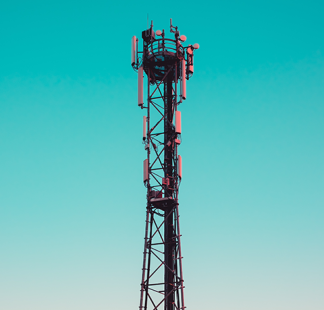- Jonathan Mwakijele
- Annitah Rodah Natwati
Intermediate
- Bank transfer
- Credit card
- M-pesa
Description
This module will provide learners with an understanding of the management of radio spectrum related to satellite communications systems.
This training is targeted at those who are entering the regulatory environment and are interacting with technologies as operators, developers or managers. It is targeted at those aiming to understand the workings of various technologies with a view to developing a general overview of trends.
This may include professionals working in the telecommunications industry, lawyers, regulatory staff across all departments.
Besides that, other institutions and individuals that are dedicated to building their capacity related to new technologies are welcome to participate.
Participants are expected to have knowledge in Spectrum Management. Participants are also expected to be working for a regulator, or in the ICT/Telecoms sector as a provider or consultant.
Upon completion of the training course, participants will be able to:
- Identify the basic principles of satellite communications, different types of satellites/satellite networks, and Earth Stations.
- Identify the relevant parts of ITU Radio Regulations governing spectrum use by satellite communications systems.
- Describe the SM procedures for satellite communications systems
- Describe the Satellite orbital position and frequency assignment plans
- Explain the respective roles of NRAs, satellite operators, and ITU BR in managing spectrum for satellite communications systems
- Interpret the provisions of ITU Radio Regulations in respect of satellite communications services
- Use the international and national rules and specifications (e.g., National Frequency Allocation Table)
- Interpret the essential business development criteria and trends
The course is instructor-led. Course materials such as PowerPoint slides will be posted at the ITU Academy. Participants have to study each week, participate in scheduled activities, and undertake self-assessments. Participants will reinforce their understanding of the topics studied by drawing on their specific environments and are encouraged to consult with experienced colleagues who are working on a relevant topic. The following methods will be used for this course:
- Self-study of PPTs and reference materials
- Instructor-led presentations and discussions through ZOOM on Tuesday and Thursday from 1500 Hours to 1700 Hours EAT
- Forum discussions through the ITU Academy portal
Participation in all four (4) Forums 20%
Quiz week 1 10%
Quiz week 2 10%
Quiz week 3 10%
Quiz week 4 10%
End of course assignment 40%
A total score of 70% or higher is required to obtain the ITU certificate
WEEK 1
Introduction to Satellite Communication Services
Satellite Communication Services
- FSS
- Non – FSS e.g., MSS, BSS, RDSS
Coverage
- Global
- Regional
- National
Key learning points: Identify the basic principles of satellite communications, different types of satellites/satellite networks and Earth Stations.
Training activities details
- Live Lecture and Discussion: Tuesday and Thursday
- Read week 1 Materials and references
- Forum Topic 1: Relevance of Satellite Services in the current communications setup
- Quiz 1: Friday
WEEK 2
Frequency Bands used in the FSS for GSO
- 1/2 GHz L band
- 6/4 GHz C band
- 8/7 GHz X band
- 2.5/4 GHz S-band
- 14/11-12 GHz Ku band
- 18/12 GHz Feeder Link for BSS bands
- 30/20 GHz Ka-band
- 37.5/50.2 V band
Frequency reuse and bandwidth utilization
Different types of satellite systems and their respective Spectrum Management considerations:
- GSO
- Non-GSO
Key learning points: Describe the satellite orbital position and frequency assignment plans.
Training activities details
- Live Lecture and Discussion: Tuesday and Thursday
- Read week 2 Materials and references
- Forum Topic 2: High data rate Architectures
- Quiz 2: Friday
WEEK 3
Different types of Earth Stations:
- Fixed
- Mobile/Portable
Overview of the International Radio Regulations and Appendixes pertaining to satellite systems;
- Vol 1 Articles
- Vol 2 Appendixes
- Vol 3 Resolutions and Recommendations
- Vol 4 ITU-R Recommendations incorporated by Reference
ITU BR procedures overview
- Technical/Regulatory Examination
- BSS Plans and Lists (AP30/30A)
- FSS Plans and Lists (AP30B)
Key learning points:
- Describe the different types of Earth Stations.
- Interpret relevant parts of ITU Radio Regulations governing spectrum use by satellite communications systems.
Training activities details
- Live Lecture and Discussion: Tuesday and Thursday
- Read week 3 Materials and references
- Forum Topic 3: LEO technologies and propagation models
- Quiz 3: Friday
WEEK 4
Notification Software Overview
- Electronic submission of notices
- Application of BR software packages
- BR IFIC on CD‐ROM
Key learning points: Use the respective roles of NRAs, satellite operators and ITU BR in managing spectrum for satellite communications systems
Training activities details
- Live Lecture and Discussion: Tuesday and Thursday
- Read week 4 Materials and references
- Forum Topic 4: Emerging Architectures
- Quiz 4 & End of course assignment submission: Friday











